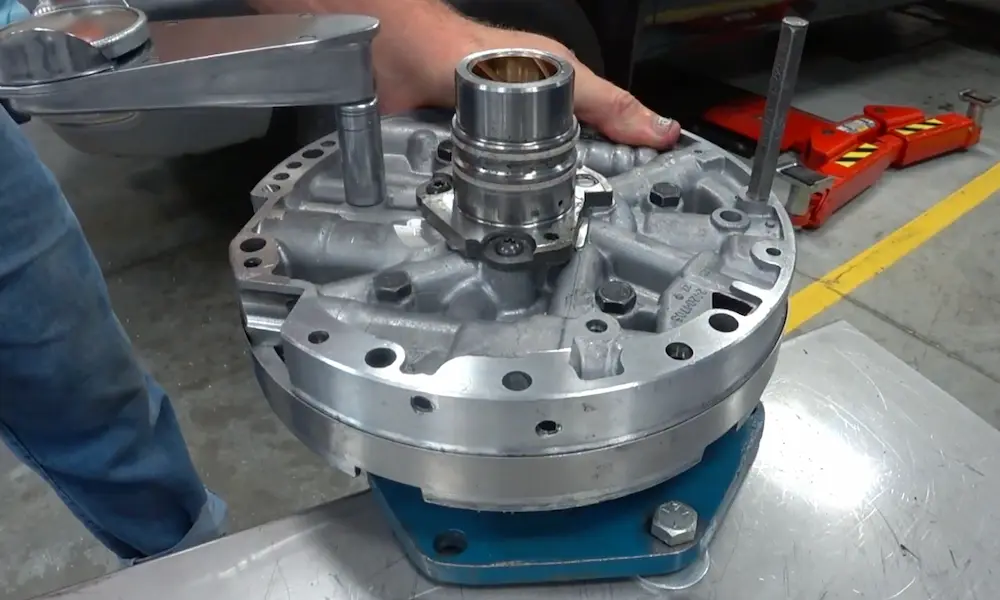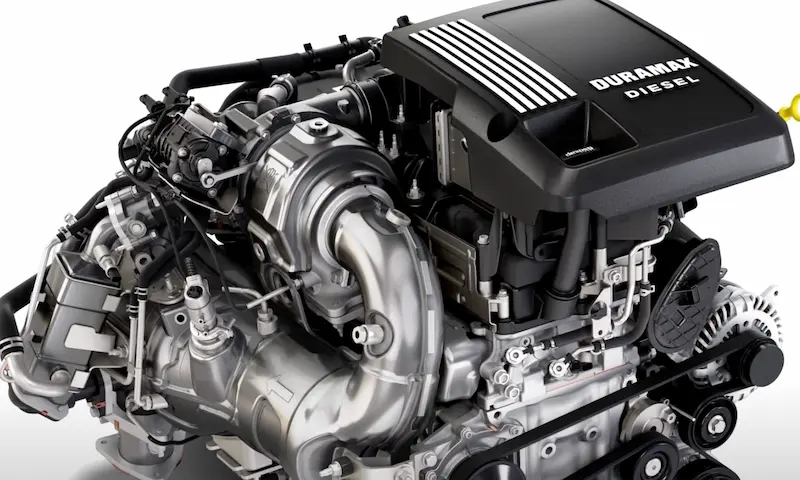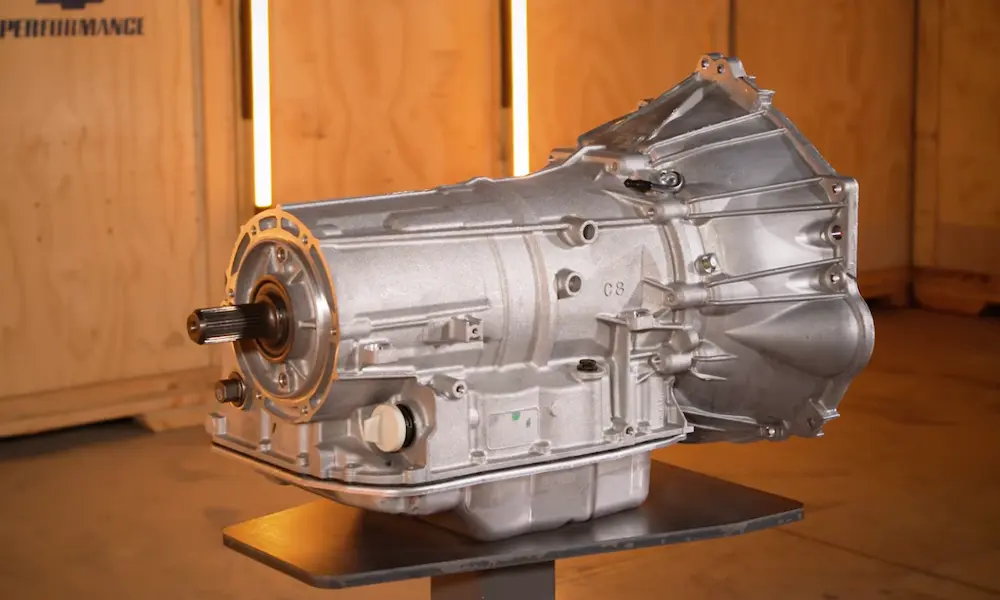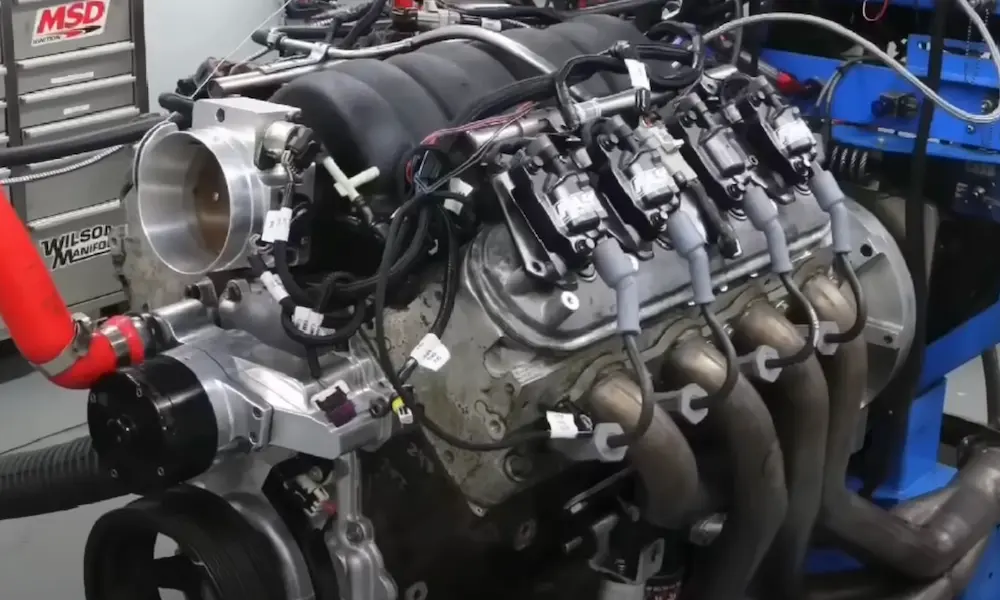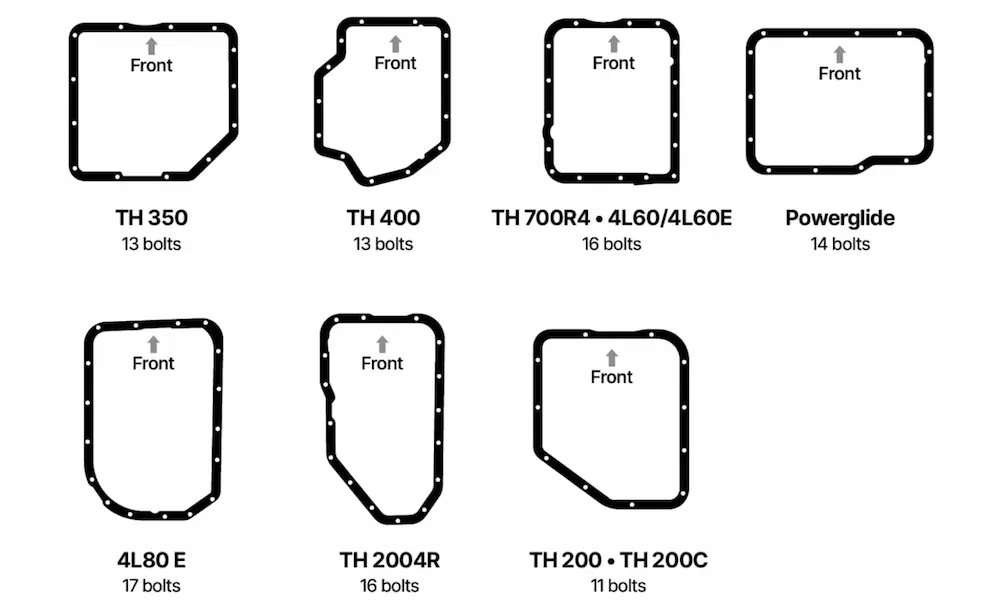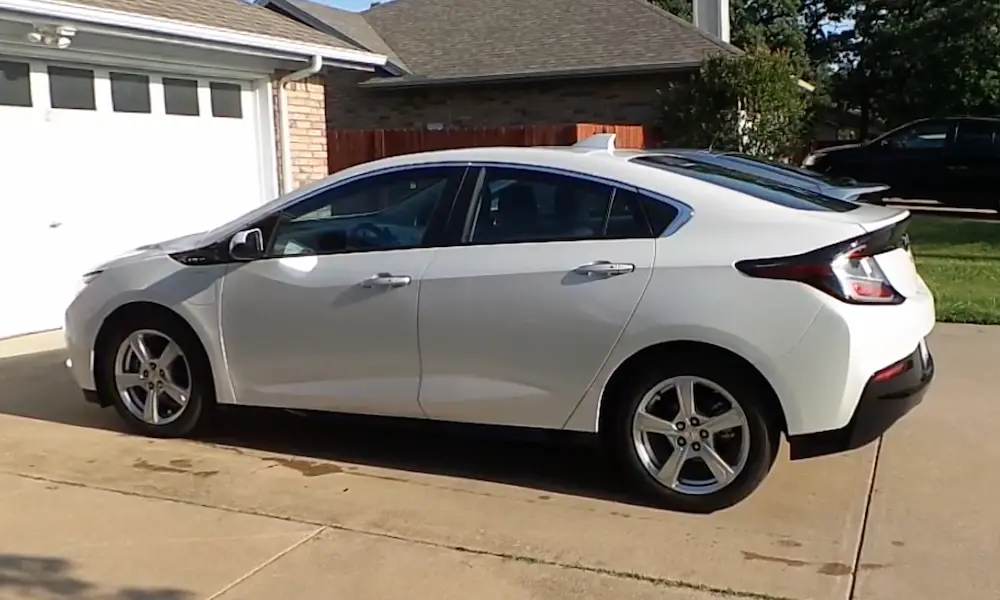Are you hearing strange noises from your Chevy Silverado? Noticing oil disappearing faster than usual? If you own a vehicle with GM’s LC9 5.3L V8 engine, you might be experiencing some of the notorious problems that have plagued these powerplants. Don’t worry – you’re about to discover everything you need to know about these issues, what causes them, and what you can do about them.
What is the LC9 5.3L V8 Engine?
The LC9 is a 5.3-liter V8 engine produced by General Motors between 2006 and 2014. It was installed in popular GM vehicles including:
- Chevrolet Silverado
- Chevrolet Suburban
- GMC Sierra
- Other GMT900 platform vehicles
This aluminum block engine was designed to deliver 315 horsepower and 338 lb-ft of torque while offering improved fuel economy through technologies like Active Fuel Management (AFM), which deactivates four cylinders under light loads. Unfortunately, these innovative features came with significant reliability issues that have resulted in class action lawsuits and frustrated owners.
Common LC9 Engine Problems
Excessive Oil Consumption
The most widespread and frustrating problem with LC9 engines is their tendency to consume oil at an alarming rate.
Many owners report using 1-2 quarts of oil every 1,000 miles – far exceeding normal consumption rates. This issue stems from a fundamental design flaw in the piston rings, which fail to properly seal the combustion chambers. The defective rings allow oil to migrate past them and burn in the combustion chamber.
A federal jury found that GM was aware of this defect but failed to adequately address it, leading to a $102.6 million verdict against the company in 2022.
Signs of this problem include:
- Blue smoke from the exhaust
- Constantly low oil levels
- Oil pressure warning lights
- Engine running rough
Active Fuel Management (AFM) Failures
The AFM system in LC9 engines uses hydraulic lifters with locking pins to deactivate cylinders when full power isn’t needed. While innovative, this system has proven highly problematic:
- Lifter Collapse: The hydraulic lifters frequently collapse or stick, causing misfires and severe engine damage.
- Camshaft Damage: Failed lifters can damage the camshaft, creating a metal-on-metal grinding that destroys these expensive components.
- Oil System Contamination: When lifters fail, they can send metal debris throughout the oil system, potentially requiring a complete engine replacement.
A technical service bulletin confirmed these issues, with technicians noting that AFM-related failures often appeared around 100,000-160,000 miles.
Valvetrain Noise and Damage
Owners of LC9-equipped vehicles frequently report distinctive ticking or knocking sounds from the valvetrain. These noises typically indicate:
- Collapsed AFM lifters
- Damaged pushrods
- Worn camshaft lobes
- Misaligned lifters
As these components deteriorate, the noise typically gets louder and can eventually lead to complete engine failure if not addressed.
Oil Life Monitoring System Failures
Adding insult to injury, the LC9’s oil life monitoring system often fails to alert drivers to dangerously low oil levels. This system:
- Estimates oil quality based on engine load and temperature rather than actual oil level
- Provides no warning until oil levels are critically low
- Leaves owners unaware of excessive oil consumption until damage occurs
This design flaw has contributed to many premature engine failures, as documented in forums where owners report their engines seizing with no prior warning.
What Causes These Problems?
Flawed Piston Ring Design
The root cause of the oil consumption issue is a fundamentally flawed piston ring design. Under operating temperatures, the rings:
- Lose tension and fail to maintain proper seal
- Allow oil to bypass and enter combustion chambers
- Permit combustion gases to enter the crankcase
- Create a cycle of increasing wear and consumption
Engineering analysis showed that ring temperatures exceeded 300°C during highway towing, exacerbating wear and causing premature failure.
AFM System Complexity
The AFM system’s complexity introduced multiple failure points:
- Hydraulic lifters subjected to constant pressure changes
- Oil pressure variations affecting AFM operation
- Lifter bore misalignment accelerating wear
- Increased oil aeration and contamination
GM engineers identified these issues as early as 2010, but meaningful design changes were delayed until after the 2014 model year.
Carbon Buildup Complications
The oil consumption problem creates a cycle of carbon buildup:
- Burning oil creates carbon deposits on spark plugs
- Carbon clogs fuel injectors and intake valves
- This causes rough running and misfires
- Misfires create more carbon and accelerate wear
GM’s recommended “cleaning procedure” for pistons proved ineffective, with carbon deposits typically reaccumulating within weeks.
The Cost of LC9 Engine Problems
The financial impact of these issues can be severe:
| Repair | Typical Cost | Notes |
|---|---|---|
| Complete engine rebuild | $5,000-$8,000 | Often needed when damage is extensive |
| AFM delete kit + installation | $1,200-$2,500 | Popular preventative measure |
| Lifter and camshaft replacement | $2,500-$4,000 | Common repair that often repeats |
| Oil consumption diagnosis | $300-$800 | Often inconclusive without teardown |
Beyond these direct costs, owners face:
- Decreased vehicle value
- Lost time for repairs
- Towing expenses
- Rental car costs during repairs
Legal Actions Against GM
The problems with the LC9 engine have resulted in significant legal action:
2022 Class Action Verdict
In October 2022, a California federal jury ordered GM to pay $102.6 million to 38,000 owners of LC9-equipped vehicles in California, North Carolina, and Idaho. The lawsuit demonstrated that GM had concealed internal reports linking the piston ring design to oil consumption issues.
Each affected owner received $2,700 in compensation, though GM appealed the verdict.
Earlier Lawsuits
The 2022 case marked GM’s third major loss over the LC9 engine:
- A 2016 lawsuit alleged defects with similar oil consumption issues
- A 2020 class action argued GM’s “stop-gap” fixes failed to address root causes
- Internal communications revealed GM engineers had advocated for redesigns that were rejected
Solutions for LC9 Engine Problems
If you’re dealing with LC9 engine issues, you have several options:
AFM Delete Kits
One of the most popular solutions is installing an AFM delete kit, which:
- Replaces AFM lifters with standard lifters
- Often includes a camshaft replacement
- Eliminates the cylinder deactivation function
- Reduces oil consumption by up to 80%
These kits typically cost $1,200-$2,500 installed but can save thousands in future repairs.
Enhanced Oil Management
To extend your LC9 engine’s life:
- Use High-Zinc Oils: Lubricants with zinc dialkyldithiophosphate (ZDDP) reduce lifter and camshaft wear
- Install Oil Deflectors: A baffle in the oil pan reduces aeration
- Change Oil Frequently: Reduce intervals to 3,000 miles to minimize sludge
- Monitor Oil Levels Weekly: Don’t rely on dashboard warnings
Performance Modifications
Some owners have successfully modified LC9 engines for better reliability:
- Camshaft Upgrades: Truck cams with 215° duration improve torque and reliability
- Cylinder Head Porting: Enlarging ports reduces carbon buildup
- Complete Rebuilds: Using upgraded components can resolve issues permanently
Regular Maintenance Practices
If you can’t afford major modifications:
- Check oil levels every 500 miles
- Use only high-quality synthetic oil
- Clean throttle bodies and fuel injectors regularly
- Address any strange noises immediately
- Consider using oil additives designed to reduce consumption
Identifying LC9 Engine Problems Early
Early detection can save thousands in repair costs. Watch for:
Warning Signs
- Blue smoke from exhaust, especially on startup
- Oil level dropping between changes
- Check engine light with misfire codes (P0300-P0308)
- Ticking noises that increase with engine temperature
- Rough idle that improves as engine warms up
- Stabilitrak warnings appearing alongside engine issues
- Poor acceleration or reduced power
Diagnostic Steps
If you suspect issues:
- Check oil consumption by measuring levels over 1,000 miles
- Perform compression tests on all cylinders
- Use a borescope to check piston and cylinder condition
- Listen for valve lifter noise after cold starts
- Monitor for specific trouble codes related to misfires
LC9 vs. Newer GM Engines
After the LC9 problems, GM made significant changes:
| Feature | LC9 (2007-2014) | EcoTec3 L83 (2014+) |
|---|---|---|
| Piston Design | Problematic flat-top pistons | Improved dome design with better ring lands |
| Cylinder Deactivation | 4-cylinder AFM | Dynamic Fuel Management (DFM) |
| Oil Consumption | 1-2 quarts/1000 miles | 0.1-0.3 quarts/1000 miles (typical) |
| Block Material | Aluminum | Aluminum with improved casting |
| Common Issues | Ring failure, lifter collapse | Significantly reduced problems |
While the newer engines aren’t perfect, they address many of the fundamental flaws that plagued the LC9.
Buying a Used Vehicle with an LC9 Engine
If you’re considering a used GM truck or SUV with the LC9:
What to Check
- Complete service history, especially oil change records
- Signs of excessive oil consumption (clean engine bay might indicate fresh oil)
- Listen for lifter noise during cold start
- Check for blue smoke during acceleration
- Look for AFM delete modifications (often a positive)
- Verify if the vehicle was part of any class-action settlements
Questions to Ask Sellers
- Has the vehicle had any engine repairs?
- How much oil does it use between changes?
- Have you experienced any misfires or rough running?
- Was any work done to address oil consumption?
- Has the AFM system been modified or disabled?
The Future of LC9 Engines
As these engines age, owners typically face three paths:
- Proactive Modification: Installing AFM delete kits and upgrading components before failure
- Reactive Repair: Addressing issues as they occur, often leading to multiple repairs
- Engine Replacement: Swapping in a newer, more reliable engine
The good news is that the aftermarket has developed excellent solutions to address these issues, and with proper modifications, an LC9 can become a reliable powerplant.
Final Thoughts
The LC9 engine represents a cautionary tale of prioritizing fuel economy over reliability. While innovative in concept, its design flaws have caused significant headaches for owners. Whether you’re dealing with these problems now or considering a vehicle equipped with this engine, understanding these issues is essential for making informed decisions.
With proper maintenance, timely intervention, and targeted modifications, many of these problems can be mitigated. The key is staying vigilant, addressing oil consumption early, and not ignoring the warning signs that could indicate bigger problems ahead.



